Barely a year goes by without some debate on the utility of tracks vs wheels, and alongside
questions about the validity of tanks it appears to be one of the most recurrent themes discussed by armoured fighting vehicle enthusiasts. It is difficult to arrive at any conclusive answers about the role of wheeled vehicles, but doing so through the lens of peer warfare provides an angle that may settle the debate.
Limited Mobility – Tracks vs Wheels
A brief Google search of the term “Tracks vs Wheels” will return multiple articles wading into a topic that is ultimately fruitless if it is not provided country- and conflict-specific context. The arguments are broadly divided between those who advocate for wheeled vehicles based upon their supposed reduced logistics burden and cost when compared with their tracked counterparts, those who argue that the better mobility of tracked vehicles makes them a more optimal choice, and those who support the use of both but recognise the maintenance burden this imposes. Others yet argue that the mobility of wheeled vehicles – especially 8×8s – approached that of tracked vehicles. It is fair to argue that every thesis on tracks vs wheels, with the exception of their parity in off-road mobility, is valid depending on the context in which they are employed. Yet at the same time, every thesis can also be wrong for the same reasons. However, there are physical truths that apply to armoured vehicles operating off-road, which necessitates delineation and impacts their utility to an armed force. These truths relate mostly to the mobility and trafficability of large wheeled vehicles when compared with tracked vehicles, which in turn impacts their ability to bear weight, in turn limiting their capacity to carry additional armour and weapons.
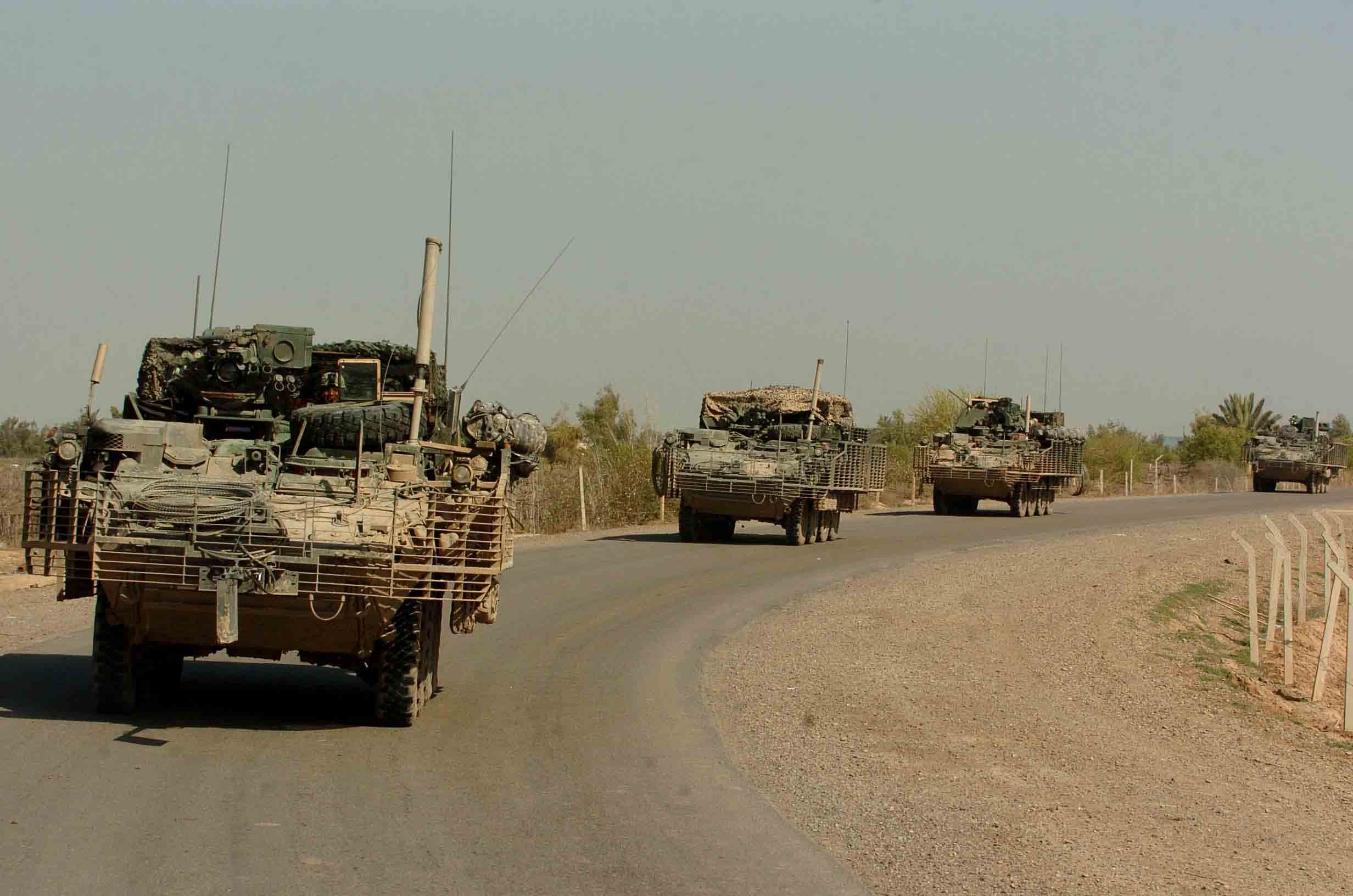
Trafficability is the ability of a vehicle to travel over certain types of terrain or ground. This should be differentiated from mobility, which typically describes the movement characteristics of a vehicle, such as speed, operational range, height of obstacles that can be overcome, and so on. Mobility characteristics dictate the trafficability of a vehicle. One key characteristic that defines off-road driving is known as traction, or tractive performance. The tractive performance of tracked and wheeled vehicles is influenced by the strength of the soil being travelled over. Weak soils with high moisture content will exhibit a greater degree of shearing deformity when travelled over than drier, stronger soils. The greater the level of shear stress (deformation) caused by the vehicle to the soil, the greater the effort is required to move the vehicle. The second element is the thrust created by the vehicle’s tracks or tyres: Put very simply, tracked vehicles typically have a much larger contact area with the ground than wheeled vehicles, which equates to thrust applied over a greater surface area. This means tracked vehicles can overcome soil slippage and deformation, whereas wheeled vehicles – especially those that cannot adjust their tyre pressures – will tend to create more damage to the soil and lose traction. J.Y. Wong has used computer simulations to show that on certain soil types, an 8×8 wheeled vehicle will only reach 79.2% of the thrust developed by a tracked vehicle on the same (firmer) soil type. As the soil becomes weaker, this figure decreases and can become as low as 50.4% on loam, which means that a wheeled vehicle will be immobilised sooner than a tracked equivalent.

This is a difficult characteristic to measure as it is almost impossible to model all soil types and the interactions that they have with wheeled vehicles. Professor Richard Ogorkiewicz noted that even with a central tyre inflation system (CTIS) that can increase the contact area of the vehicle (by 5-20%), a 20 tonne vehicle would not be able to move at much more than 20 km/h over wet agricultural soil with a strength of 200 kPa. The tyre inflation can be reduced further, but this degrades vehicle speed even more. Ogorkiewicz’s conclusions are challenged to some extent by technological developments such as the introduction of in-wheel drives, as opposed to axle drives, which may increase the traction of wheeled vehicles. Tyre technology has also improved since many of these models were developed, which suggests that performance may have improved. Bruce Maclaurin, a vehicle mobility specialist, has also explored the available terrain mobility models and arrived at the conclusion that none of them are perfect. However, he indicates that their results broadly support the conclusion that wheeled vehicles have inferior mobility to tracked vehicles, especially in soft soils.
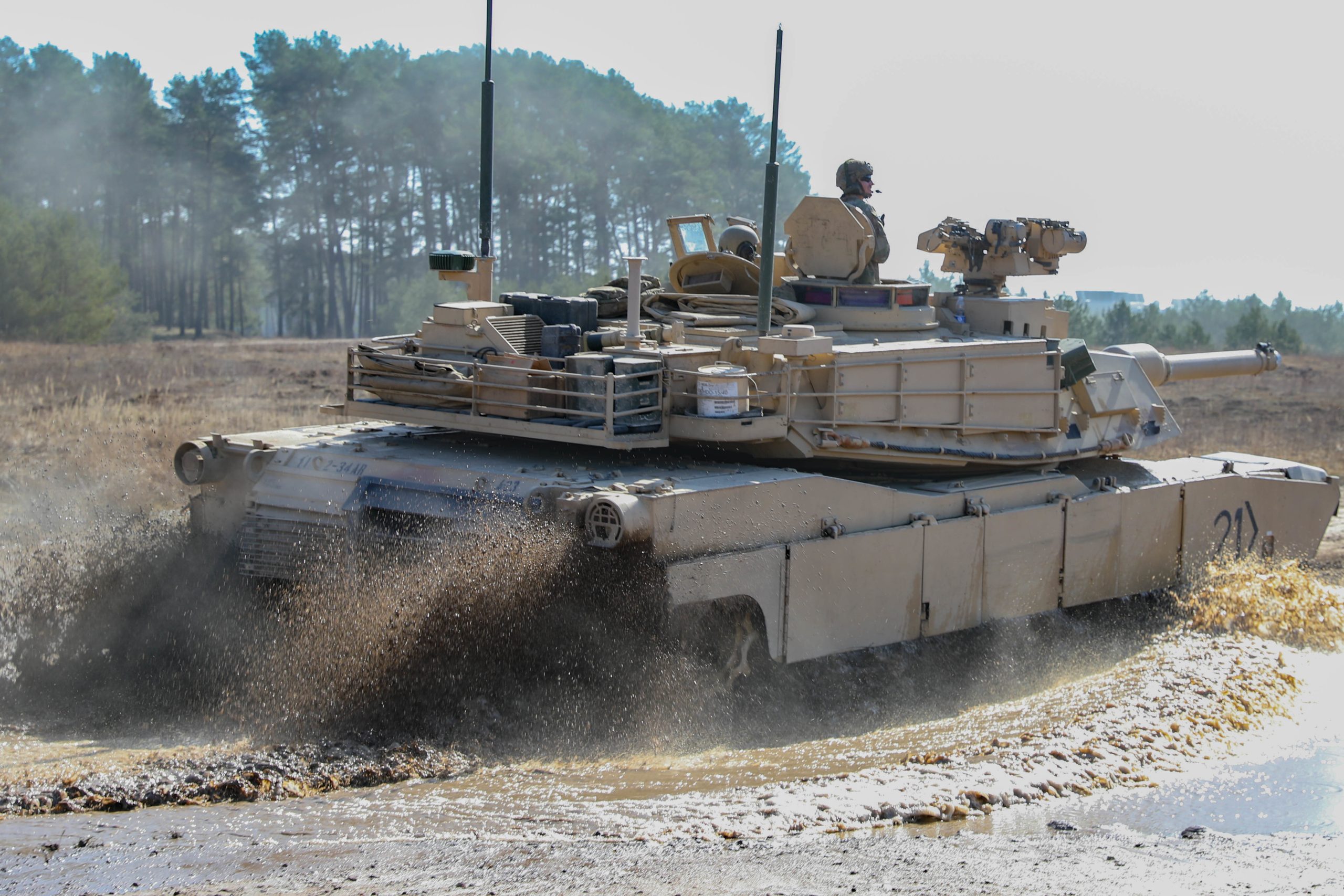
Furthermore, one article published by Singapore’s Defence Science and Technology Agency (DSTA) in 2016 indicates that off-road mobility is defined in part by the number of passes that a vehicle must make over certain terrain. The authors state that if the number of passes can be reduced by 30%, the likelihood of the vehicle successfully passing the terrain improves and can become comparable with tracked vehicles on all but the softest terrain. According to the theories that form terramechanics, reducing the number of passes allow for an increase in vehicle weight within a given contact area. However, it would also require estimates about the number of passes over given types of terrain, which might not be possible for most militaries. If more passes than estimated are required, wheeled vehicles will quickly become immobile.
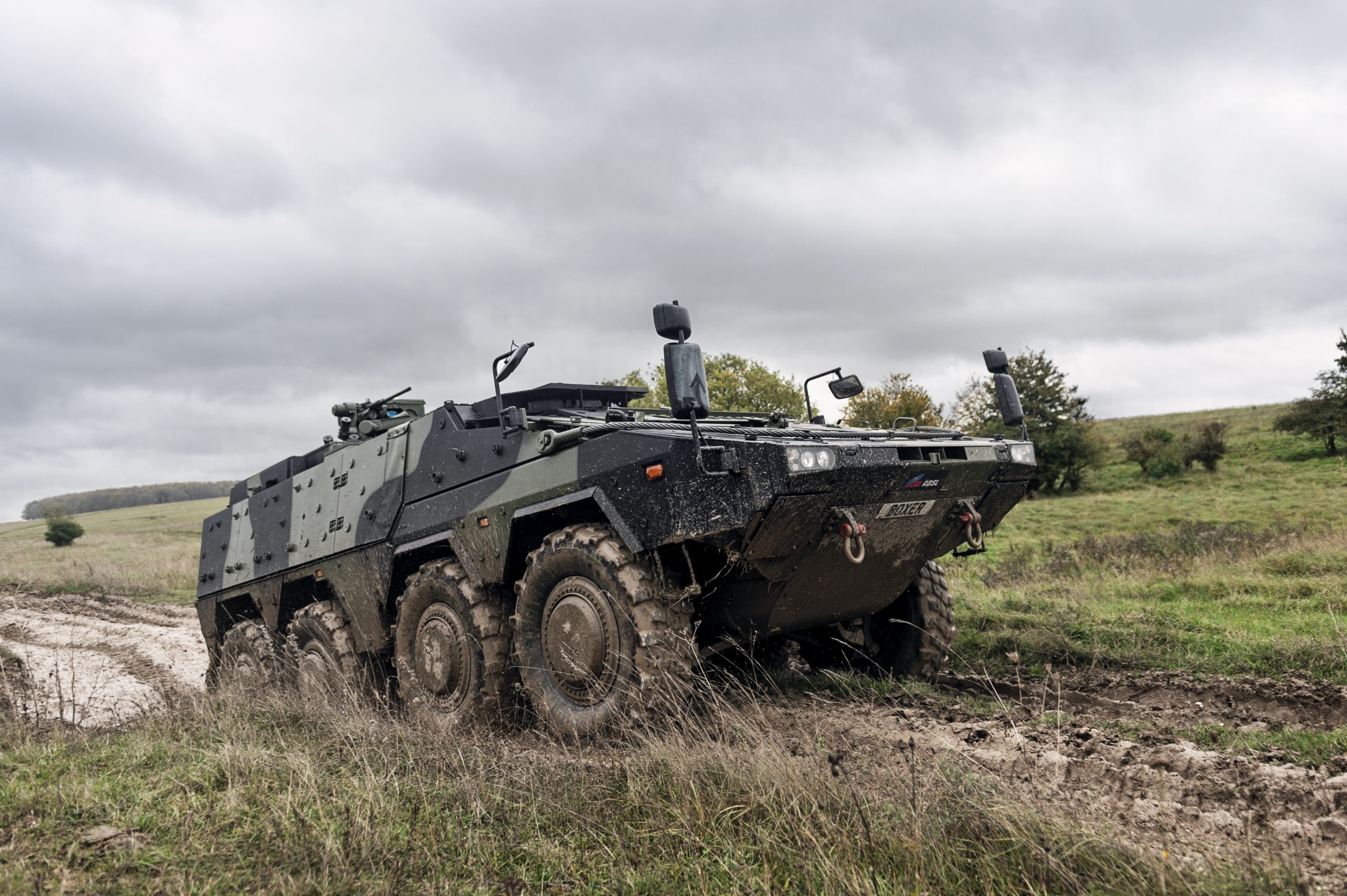
Put simply, the argument that wheeled vehicles can match the off-road mobility of tracked vehicles does not have a wheel to stand on. Of course, there are exceptions – not all wheeled vehicles are the same, and not all tracked vehicles are the same, but generally speaking this will be true of most comparisons.

However, it is worth noting that Wong’s calculations indicate that wheeled vehicles can achieve similar traction to tracked vehicles on frictional soils – otherwise known as sand. This is because movement on sand is less dependent on the total contact area as it is on cohesive soils like clay. There are of course other terrains where wheeled vehicles excel, and that is most notable in urban locations or on-road travel in general. A US Army assessment in 1988 compared the mission time required to complete 100 km of travel at various percentages of cross-country travel. It showed that when around 40% of the mission was travelled off-road in wet soils, a wheeled vehicle could exhibit similar mission times to a tracked equivalent, however the mission times increased dramatically as the percentage increased, reaching 60 hours for a mission requiring 70 km of off-road travel. It follows that as the percentage of off-road travel increases by mission set, the utility of wheeled platforms decreases, especially when the gross vehicle weight exceeds 20 tonnes and when wet weather is factored in. Furthermore, even in areas where wheels shine, technologies such as composite rubber tracks are narrowing the gap, making tracked vehicles more comfortable and reducing their fuel consumption on roads, whilst increasing speed.
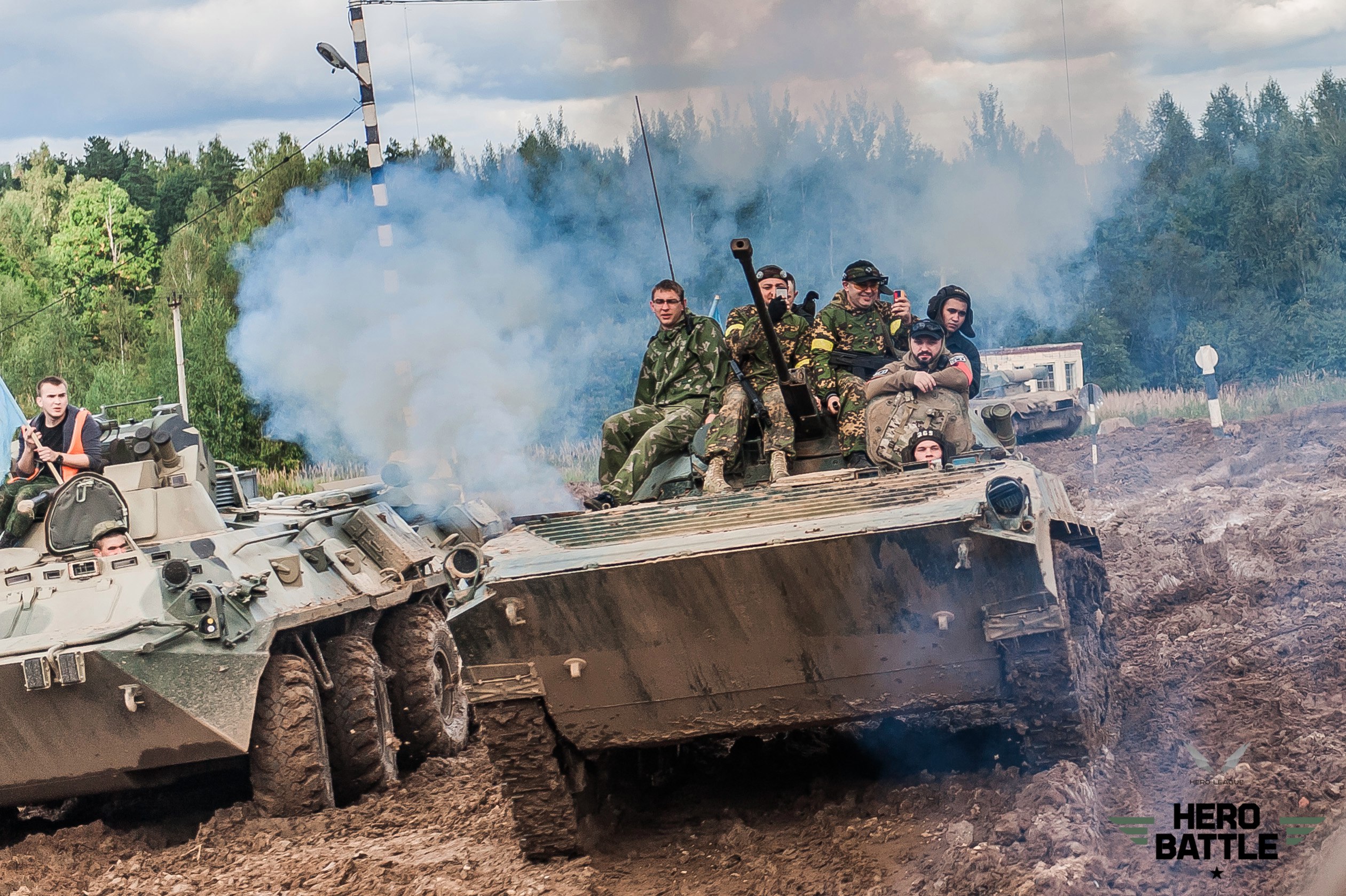
The ride quality and handling of wheeled vehicles has improved significantly since the US Army studies quoted above were conducted. Some scholars argued in the early 90s that wheeled vehicles were approaching the comfort levels of tracked vehicles when travelling off-road. This same study also indicated that in some circumstances a 32 ton (29 tonne) 8×8 vehicle would attain similar total mission speeds to a tank when travelling on the same terrain, but raises the interesting concept of the vehicle grey zone. The authors argue that at light loads and for vehicles required to travel long distances on roads, it makes sense to use wheeled vehicles. Equally, very heavy combat platforms weighing in excess of 50 tonnes can only be tracked. It is the area in-between that prompts debate.

Finally, there is the issue of cost. Wheeled vehicles are generally assumed to cost less than tracked equivalents, although Paul Hornback, a former Engineer at the HQ TRADOC Combat Development Engineering Division, argued that this comparison might be unfair, since wheeled vehicles tend to spend more of their time travelling on roads than tracked vehicles, which spend more time off-road. He added that tests have shown wheeled vehicle reliability drops the more they travel off-road. This suggests that wheeled vehicles might have similar operational support burdens to tracked vehicles if they are required to operate off-road extensively. Something to this effect was observed when the US Army deployed its Stryker 8×8s to Iraq. The vehicles were upgraded with additional armour leading to excessive tyre and wheel station wear, as well as damage to the drive train. However, generally speaking wheeled vehicles that are used primarily in urban situations will exhibit better tactical agility and operational mobility than a tracked equivalent at a lower cost.

There are multiple accounts of the Stryker family in operation in Iraq to support this.
In sum, the primary limitation of wheeled vehicles is the result of the complex interactions arising from soil mechanics, contact area, and dispersion of ground pressure. This leads to a general loss of mobility on weaker soils and limits the ability of the vehicle’s weight to be increased. There is, however, a clear need to appraise what types of mission a country needs its armed forces to complete and assess whether or not wheeled vehicles have a role in peer warfare from there.
Peer Warfare – A Beast of Different Requirements
Assessing the role of wheeled combat vehicles in peer warfare requires a definition of peer warfare. A peer is generally defined as a person or thing “equal to another in abilities, qualifications, age, background, and social status.” Debate within the European defence industry typically focuses this definition on NATO and its potential foes, which is unhelpful as these scenarios essentially involve potential world-ending wars that will be of extremely high intensity. If, however, the definition is broadened to include other states, then a peer opponent for Saudi Arabia is probably Iran, for Turkey it is perhaps Syria or Greece, although in all of these examples, one side is arguably stronger than the other in some regard.
This means that each country’s definition of peer warfare varies and the demands of their vehicles with it. For example, countries that are predominantly covered in sandy terrain with urban settlements, might find wheeled vehicles as effective a purchase as tracked vehicles. This is because wheeled platforms can approach the mobility characteristics of tracked vehicles on sand, and will exceed them on roads. However, a European country would likely have to contend with wet soils that at times are very weak, which severely limits the off-road mobility of wheeled vehicles. It is therefore potentially more useful for the analysis of the role of 8×8 and 6×6 vehicles if a strict idea of peer warfare is abandoned, or expanded to simply mean warfare of a high intensity and high frequency, placing consistent and considerable demands upon an armoured vehicle.

The question of mobility is compounded by the roles that wheeled vehicles are required to perform. They are increasingly procured to operate as infantry fighting vehicles (IFV), which requires them to carry additional armour, infantry, and weaponry commensurate with that role. They are typically unable to carry as much armour as tracked alternatives because the size of the tyres cannot be increased to meet the additional weight. That said, modern designs such as Piranha 5 and Boxer are designed to be fitted with extensive armour suites protecting them from 30 mm rounds across the frontal arc. This limits their mobility characteristics further, which can impact the utility of the vehicles in the IFV role, where they are required to move off-road to support the infantry in dismounted combat.
The addition of a turret to carry medium calibre cannons is typical but limits the space for infantry in the rear of the vehicle. If off-road mobility is significantly impacted by the addition of equipment necessary to create an IFV capable of fighting in wet and weak soils, then it will not be able to function effectively. An IFV must fight onto an objective with the infantry it carries. Assuming that the formation is supported by artillery, the effects of a typical fire mission would last about 60 seconds, following which the vehicle has to get within 30 seconds of the objective to deploy its infantry with maximum impact. If it is stuck in mud and unable to close this gap, the infantry will be exposed and vulnerable, or require longer artillery bombardments closer to them as they attack – neither outcome is optimal.
It could be argued that the extreme protection requirements are another Western reflection, however. The BTR-3, BTR-4, and BTR-80 vehicles used by Russia and Ukraine are only armoured to protect against 12.7 mm rounds across the frontal arc and armour piercing small arms from the side. Despite this, they have proven themselves to be very effective during the war in Ukraine, especially in their application of firepower using the 30 mm 2A72 and ZTM-1 cannons they carry as a main armament. There is evidence that these vehicles have encountered the limits of their mobility, with some images showing BTR-4s stuck in agricultural fields having left hardened roads, but their lethality and mobility in urban environments has featured prominently throughout the war. Therefore, perhaps there is a case to be made for lighter 8×8 and 6×6 vehicles, but with a greater acceptance of the risk that comes with reduced levels of armour.
Beyond protection, other factors can play a role. The use of large calibre guns can make wheeled vehicles more effective in a range of different situations, Japan for example has bet that the Type 16 mobile combat vehicle with its high pressure 105 mm gun is more appropriate than its tanks in certain situations. The US employed Stryker mobile gun systems (MGSs) with good effect in Iraq and Afghanistan, but found shortcomings with the weapon technology. South Africa’s armed forces employed the Ratel 90 and Eland 90 extensively during the Angolan Bush War and were ultimately able to defeat some of the T-55 tanks that they faced. This is often held up as a good example of the capabilities of wheeled vehicles, but it is worth noting that 61 Mechanised Battalion Group, which fought those tanks, complained that their guns were not sufficient to face the T-55s and requested that a tank squadron be deployed. The fact is that modern large calibre weapons in 105 or 120 mm calibres can be fitted to wheeled vehicles and equipped with advanced ammunition natures that enable them to adequately face a large proportion of the most likely tank threats that they might encounter. However, doing so sacrifices armour, which is already limited for wheeled vehicles compared with tracked equivalents, and means that they cannot provide the level of protection that tanks do. This means that wheeled vehicles can perform well as large direct fire support platforms, and in some cases against the heaviest of armoured vehicles, but that they cannot absorb the level of fire that a tank can, which is arguably the tank’s main benefit.
Ultimately, two factors must be considered: the role of the vehicle, and the terrain it is expected to fight over. The additional weight created by adding armour and weaponry to a wheeled vehicle to create an IFV might not be too detrimental for a vehicle fighting primarily in deserts, cities, and countries with extensive road networks or low levels of rain.
Conversely, it is clearly possible for some countries to operate the vehicles at a lower total weight with reduced protection. However, armies that expect to fight in countries primarily made up of wet soils, with high levels of rain, and limited road networks, would find wheeled vehicles’ off-road mobility limited when compared with tracked alternatives, regardless of the gross vehicle weight. As the concept of ‘peer warfare’ cannot be solidly defined, the role of 8×8s in peer warfare is therefore dependent upon the peers in question, and in large part the terrain that they expect to contest.
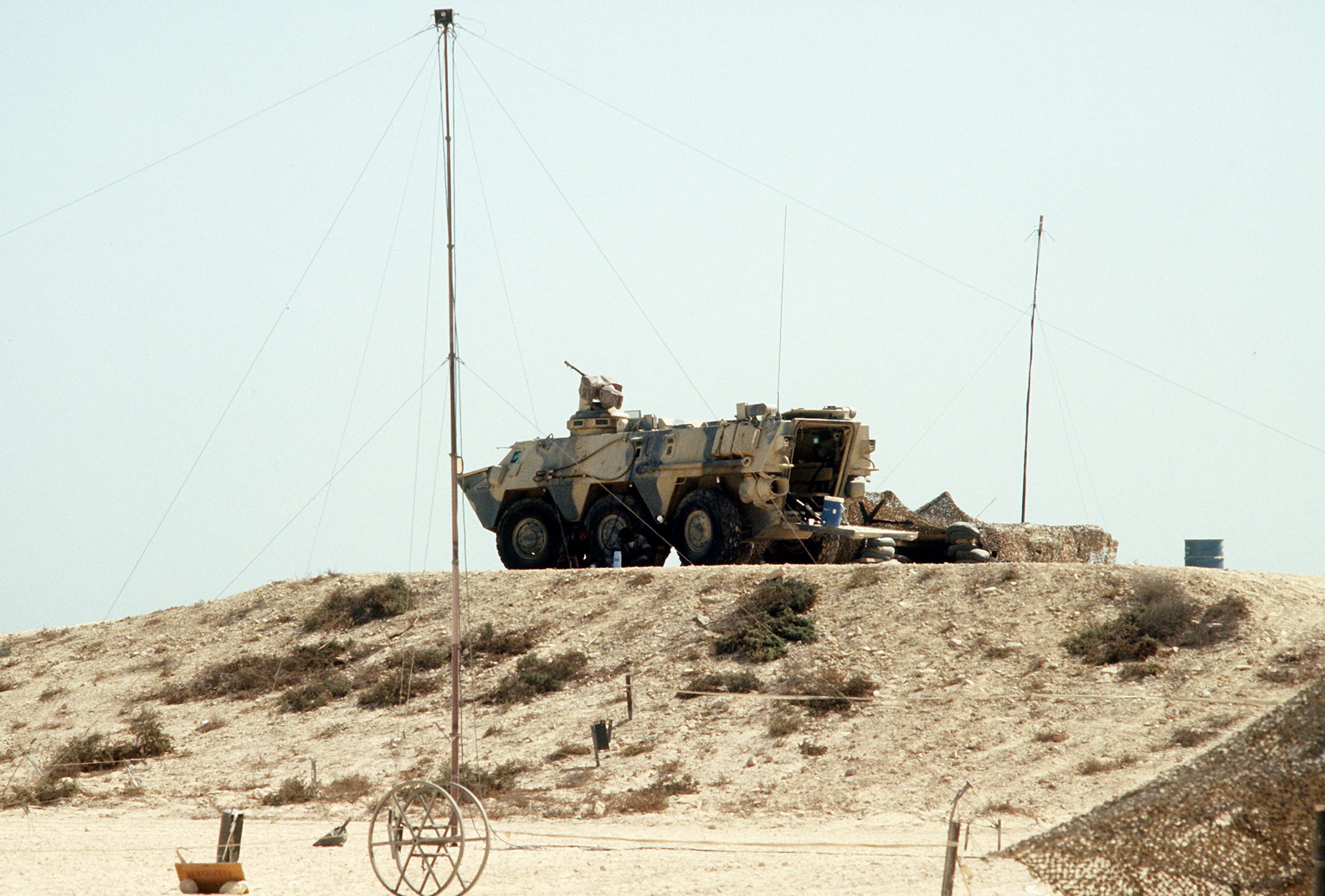
War is Hard and Complex
Perhaps the debate around wheels vs tracks – especially when peer warfare is the framing context – is polarising because war is so unforgiving. A force that structures its procurements primarily around wheeled vehicles and finds itself unable to move over the terrain it is defending will likely be punished very quickly – especially in combat with a peer opponent. It is worthwhile noting that whilst western forces have deployed mainly in counter-insurgency and peace support operations since 1991, for many other nations, the 77 years since the end of WW2 have been incredibly violent, requiring frequent state-on-state conflict and combat that has varied between insurgencies and very high intensity tank battles. For many, fighting has taken place over terrain that is conducive to wheeled armoured vehicles, providing that they are in the 6×6 or greater configuration. This suggests that on the balance of statistics, wheeled vehicles are perhaps more important in the entire spectrum of peer warfare than tracked vehicles. This, of course, is an oversimplification.
The reality is that once in combat, the users of wheeled and tracked vehicles will take them wherever they feel they need to. It is unlikely that anyone in the back of a British Boxer will be trying to calculate the individual wheel station load, drawbar pull and braking distance of their vehicle as they traverse Salisbury Plain. The vehicle will either pass the terrain they need it to, or become stuck. If it becomes stuck, it is most likely a tracked vehicle that will recover it. Perhaps then the most important aspect when considering the role of wheeled vehicles in peer warfare is the training that is provided to their users. Adequately informing them of the limits of their vehicles, from the driver to the officers leading operations and planning routes, will help them avoid committing to scenarios that the technology cannot match. This in turn requires armed forces to be honest about what their armoured forces can, and cannot achieve. What terrain they can fight over, and what terrain will be challenging. The utility of wheeled vehicles in peer warfare would then be decided by doctrine, and the ability of the doctrine writers to understand the limits and strength of those vehicles in the scenarios that they expect to face.
Sam Cranny-Evans



